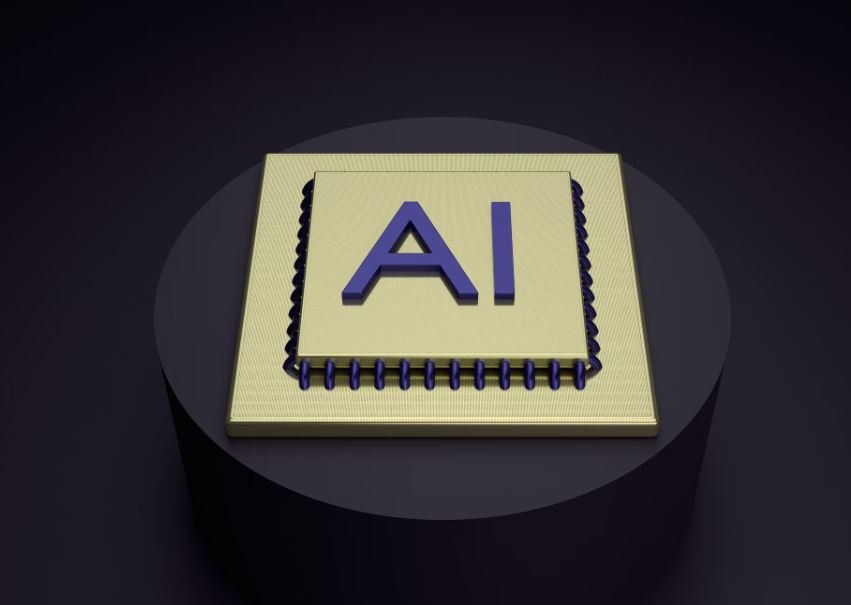Neural Network Steps
Neural networks are a key component of artificial intelligence and machine learning algorithms. They are designed to mimic the human brain’s neural connections, enabling machines to process and analyze complex data. In this article, we will explore the essential steps involved in building and training a neural network.
Key Takeaways:
- Neural networks are crucial for AI and machine learning algorithms.
- The neural network building process involves several key steps.
- Data preprocessing, architecture design, weight initialization, and training are essential stages.
- Hyperparameter tuning plays a vital role in optimizing a neural network’s performance.
- Regularization techniques help prevent overfitting in neural networks.
Before diving into the neural network development process, it is crucial to understand the key terminologies associated with it. *Activation functions* play a vital role in introducing non-linearities to the network, enabling it to solve complex problems. *Loss functions* measure the accuracy of predictions and guide the network’s learning process. *Backpropagation*, an essential algorithm for training neural networks, adjusts the weights based on the error calculated during each training iteration.
Building a Neural Network: Step-by-Step Guide
- Data Preprocessing: The quality and relevance of the training data greatly impact a neural network’s performance. Data cleaning, normalization, and feature scaling are crucial preprocessing steps. This ensures the data is in a suitable format and eliminates biases.
- Architecture Design: Choosing the right architecture for a neural network depends on the problem at hand. Common architectures include feedforward networks, convolutional neural networks (CNNs), and recurrent neural networks (RNNs). The number of layers, neurons, and connections must be carefully considered.
- Weight Initialization: Initializing the network’s weights is important to avoid getting stuck in local optima or vanishing gradients. Common weight initialization techniques include random initialization, Xavier initialization, and He initialization.
- Training the Network: During this phase, the network learns from the provided training data. It adjusts the weights based on the error calculated through backpropagation. This process continues iteratively until the network reaches an acceptable level of accuracy.
- Hyperparameter Tuning: Hyperparameters, such as learning rate, batch size, and number of epochs, significantly affect the network’s performance. Tuning these parameters is crucial to achieve the best possible outcome. Techniques like grid search or random search can be employed.
- Regularization: Overfitting is a common challenge in neural networks. Regularization techniques like L1 and L2 regularization, dropout, and early stopping help prevent overfitting by constraining the network’s weights or adjusting the training process.
During the training process, it is common to split the available data into three sets: *training set*, *validation set*, and *test set*. The training set is used to train the network, the validation set helps in parameter tuning, and the test set evaluates the final performance of the network.
The Role of Neural Networks: Real-Life Applications and Benefits
Neural networks have proven to be highly effective in solving complex problems across various domains. They have a wide range of applications, including:
| Domain | Applications |
|---|---|
| Image Recognition | Object detection, facial recognition, medical imaging analysis |
| Natural Language Processing | Speech recognition, sentiment analysis, machine translation |
| Finance | Stock market prediction, fraud detection, credit scoring |
Neural networks offer several benefits:
- Ability to learn and adapt from large amounts of data
- Capability to handle complex patterns and non-linear relationships
- Enhanced accuracy and reliability in decision-making processes
- Reduced human intervention and increased automation
Challenges and Future Directions
While neural networks have revolutionized many fields, they do face certain challenges. These include:
- Computational complexity and resource requirements
- Interpretability and explainability of the network’s decisions
- Availability of large and labeled training datasets
The future directions for neural networks involve ongoing research in areas like reinforcement learning, deep reinforcement learning, and unsupervised learning. Advancements in hardware, such as graphical processing units (GPUs) and tensor processing units (TPUs), are also enabling the development of more complex and efficient neural networks.
| Neural Network Type | Advantages | Limitations |
|---|---|---|
| Convolutional Neural Network (CNN) | Effective for image and video processing tasks. | May require large amounts of training data for optimum performance. |
| Recurrent Neural Network (RNN) | Capable of processing sequential data and capturing temporal dependencies. | Can face challenges with long-term dependencies and vanishing/exploding gradients. |
| Generative Adversarial Network (GAN) | Used for generating synthetic data and expanding training datasets. | Maintaining training stability can be challenging. |
Neural networks continue to evolve and play an increasingly important role in shaping the future of AI and machine learning. Their ability to tackle complex problems and learn from data makes them a powerful tool in various industries, paving the way for advancements and innovations.

Common Misconceptions
Introduction
Neural networks are a fascinating area of study in the field of artificial intelligence, and they have been widely used in various applications. However, there are several misconceptions and misunderstandings surrounding neural networks that often lead to confusion. This section aims to address some of the common misconceptions people have about neural networks.
Neural Networks Require Extensive Computing Power
One prevalent misconception is that neural networks require massive computing power to train and operate effectively. While it is true that complex neural networks with a large number of layers and parameters may demand substantial computational resources, there are also simple neural networks that can be trained and run on modest hardware. It is essential to understand that the performance of a neural network depends on various factors, including the size of the dataset and the complexity of the problem it is trying to solve.
- Neural networks can be designed to run on low-power devices.
- Many neural network libraries and frameworks optimize performance for efficient execution.
- The choice of hardware can significantly impact the speed of training and inference.
Neural Networks Can Replicate Human Intelligence
Another common misconception is that neural networks can replicate or mimic human intelligence. While neural networks are inspired by the workings of the human brain and can perform complex tasks, they are not capable of true human-like reasoning or consciousness. Neural networks excel at pattern recognition and can learn from large amounts of data, but they lack the cognitive abilities and common sense knowledge that human beings possess.
- Neural networks lack consciousness and self-awareness.
- They do not possess common sense reasoning abilities.
- Neural networks are designed to perform specific tasks, not replicate the entirety of human intelligence.
Neural Networks Always Provide Accurate Results
One misconception is that neural networks always provide accurate results and are infallible in their predictions. While neural networks can achieve impressive accuracy in various tasks, they are not immune to errors or biases. The quality of the output relies heavily on the quality and representativeness of the training data. If the training data is biased or lacks diversity, the neural network’s predictions can be skewed or inaccurate.
- Training data quality significantly impacts the accuracy of neural network predictions.
- Biased training data can lead to biased predictions.
- Neural networks can make mistakes and have their limitations.
Neural Networks Learn Instantly and Do Not Require Human Involvement
Some people believe that neural networks learn instantly and do not require any human involvement. While neural networks are capable of learning from data independently, they still require human intervention at various stages. Humans are responsible for designing and training the neural network architecture, preparing and curating the dataset, and evaluating its performance. Neural networks also need periodic monitoring and fine-tuning to ensure they are providing accurate results.
- Human involvement is essential in the design and training of neural networks.
- Dataset preparation and curation require human effort.
- Regular monitoring and fine-tuning are necessary for optimal performance.
Conclusion
By dispelling these common misconceptions about neural networks, we can gain a clearer understanding of their capabilities and limitations. Neural networks are powerful tools for solving complex problems, but they are not devoid of constraints. Recognizing these misconceptions and having a realistic perspective can lead to more informed and effective use of neural networks in various applications.

Neural Network Basics
Before we delve into the steps of building a neural network, let’s first understand the fundamentals. Neural networks are computational models inspired by the human brain, composed of interconnected artificial neurons. They are used for tasks such as pattern recognition, machine learning, and deep learning.
Gathering and Preparing Data
The success of a neural network heavily relies on the quality and quantity of the data used. Accurate and diverse datasets help in creating a robust model. The data needs to be cleaned, transformed, and split into training and testing sets.
Choosing the Right Activation Function
An activation function introduces non-linearity to the neural network, allowing it to learn complex relationships. The choice of activation function can greatly impact the network’s performance. Some popular activation functions include sigmoid, ReLU, and tanh.
Defining the Architecture
The architecture of a neural network refers to its structure, including the number of layers, type of layers, and number of neurons in each layer. The architecture should be carefully designed to ensure effective learning and prevent overfitting or underfitting.
Initializing Weights and Biases
Weights and biases are parameters that allow neural networks to learn from data. It is crucial to initialize these values properly to prevent the network from getting stuck in a local minima. Techniques such as Xavier and He initialization are commonly employed.
Training the Neural Network
The process of training a neural network involves adjusting the weights and biases based on the input data to minimize the error. This is typically done using optimization algorithms like gradient descent, which iteratively update the parameters to find the optimal solution.
Applying Regularization Techniques
Regularization techniques such as dropout and L1/L2 regularization are used to prevent overfitting during training. They help in generalizing the learned patterns and reduce the chances of the network memorizing the training data.
Evaluating Performance Metrics
To assess the performance of a trained neural network, various metrics are used. Accuracy, precision, recall, and F1 score are common metrics for classification tasks, while mean squared error and R-squared are used for regression problems.
Tuning Hyperparameters
Hyperparameters control the behavior of a neural network and have a significant impact on its performance. Parameters like learning rate, batch size, and number of iterations need to be fine-tuned to optimize the network’s accuracy and convergence speed.
Testing and Validation
Once the neural network is trained, it needs to be validated and tested on unseen data to evaluate its generalization abilities. Cross-validation techniques, such as k-fold, can be used to validate the model’s performance and ensure it is not overfitting to the training data.
In conclusion, building and training a neural network involves several crucial steps, including data gathering and preprocessing, choosing appropriate activation functions, defining the network architecture, initializing weights and biases, training the network, applying regularization techniques, evaluating performance metrics, tuning hyperparameters, and finally, validating and testing the model. Each step contributes to the overall success and accuracy of the neural network, enabling it to learn complex patterns and make accurate predictions.
Frequently Asked Questions
Question 1: What is a neural network?
Answer:
A neural network is a computational model inspired by the structure and functioning of the human brain. It consists of interconnected nodes, called neurons, that communicate with each other through weighted connections. Neural networks are widely used in machine learning and artificial intelligence to solve complex problems and make predictions.
Question 2: What are the steps involved in training a neural network?
Answer:
The steps involved in training a neural network typically include data collection and preprocessing, model design and initialization, forward propagation, calculation of loss or error, backward propagation, parameter updates using optimization algorithms like gradient descent, and repeating the process until the desired level of performance is achieved.
Question 3: What is forward propagation in a neural network?
Answer:
Forward propagation, also known as forward pass, is the process of moving input data through the neural network’s layers, from the input layer to the output layer. It involves the activation of each neuron in the network based on its weights and biases, which helps in computing a predicted output or outcome.
Question 4: What is backward propagation in a neural network?
Answer:
Backward propagation, also known as backpropagation, is the process of propagating the error or loss calculated by the forward propagation step back through the network. It involves calculating the gradient of the loss function with respect to the parameters of the network and updating the weights and biases accordingly to minimize the error.
Question 5: What is the role of activation functions in a neural network?
Answer:
Activation functions determine the output of a neuron or a node in a neural network. They introduce non-linearity into the network, allowing it to learn complex patterns and relationships in the data. Common activation functions include sigmoid, tanh, ReLU, and softmax, each suitable for different types of problems and architectures.
Question 6: How are the weights and biases in a neural network initialized?
Answer:
The weights and biases in a neural network are typically initialized randomly at the beginning of the training process. This random initialization helps break symmetry and allows the network to learn different representations of the data. There are various initialization techniques available such as Xavier initialization, He initialization, and random normal distribution.
Question 7: How is overfitting prevented in a neural network?
Answer:
Overfitting, where a neural network becomes too specialized to the training data and performs poorly on unseen data, can be prevented using techniques such as regularization, dropout, early stopping, and data augmentation. Regularization methods like L1 or L2 regularization penalize large weights, dropout randomly disables some neurons during training, early stopping stops training when performance on validation data starts to deteriorate, and data augmentation artificially increases the size of the training set by applying transformations to the existing data.
Question 8: How is the performance of a neural network evaluated?
Answer:
The performance of a neural network is typically evaluated using metrics such as accuracy, precision, recall, F1 score, and mean squared error (MSE), depending on the type of problem. These metrics measure how well the network is able to predict the correct output values compared to the ground truth or actual values. Cross-validation or splitting the data into training, validation, and testing sets can be used to obtain more reliable performance estimates.
Question 9: Can neural networks be used for regression tasks?
Answer:
Yes, neural networks can be used for regression tasks. In regression, the goal is to predict a continuous target variable instead of discrete classes. The output layer of the neural network may have a linear activation function, and the loss function used is typically mean squared error (MSE) or some variant of it. Neural networks have been successfully applied to various regression problems in fields such as finance, real estate, and healthcare.
Question 10: Can neural networks be used for time series forecasting?
Answer:
Yes, neural networks can be used for time series forecasting tasks. Recurrent Neural Networks (RNNs) and Long Short-Term Memory (LSTM) networks are commonly used architectures for handling sequential data like time series. These networks are designed to capture temporal dependencies and are effective in predicting future values based on the historical data. Time series forecasting using neural networks has found applications in finance, weather prediction, stock market analysis, and more.




